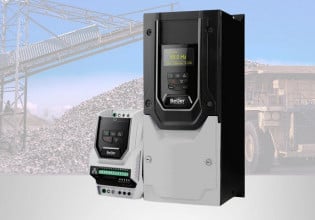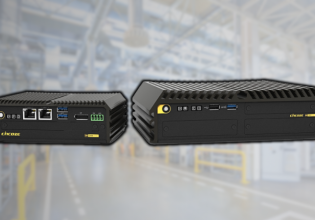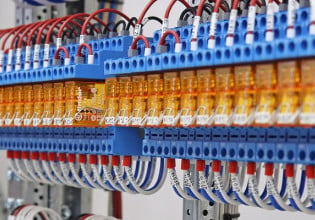The Connection Between Blockchain and Manufacturing
Blockchain is a secure and decentralized system of immutable database records that can be useful in manufacturing, such as with product traceability and logging network activity from IoT industrial devices.
There have been many trends in the recent world of digital security and currency. Many of them, including blockchain and cryptocurrency technologies, are mystifying at best. With a lack of understanding, it's hard to imagine how (or even if) these technologies apply to our area of industrial control systems. No matter how confusing it might be, we cannot simply ignore digital trends and hope they disappear, leaving us unscathed. The trend of blockchain is one of these examples, with tangible implications for the future of manufacturing.
Blockchain is not the same as cryptocurrency. Blockchain is the underlying technology that makes cryptos possible; therefore, cryptos are only one example of a real-life application of blockchain.
To say this is not to minimize the importance of cryptocurrency in pushing the technology forward and out to the general population. It could be said that blockchain would still be largely unknown if it were not for cryptos.

Figure 1. Blockchain makes cryptocurrencies like Bitcoin (₿) and Etherium (Ξ) possible. Image used courtesy of Canva
The earliest notion of blockchain was first outlined in 1991 by computer scientists Stuart Haber and Scott Stornetta. They were looking to create a secure and decentralized system of database records. But it was not until 2008 that the concept gained traction again when Satoshi Nakamoto established the first working model for a blockchain. (As a side note, there is a theory that Satoshi is a pseudonym for a developer or group of developers who worked on this.)
When Bitcoin launched in 2009, it became the first real-world blockchain application. It was largely based on the Satoshi Nakamoto model. Following that, many more cryptocurrencies were created over the next several years. Although new cryptos are looking for ways to improve upon previous generations, blockchain technology is still inherent to all of them.
So, What is Blockchain?
Hundreds of websites out there seek to define blockchain, many of which give us the standard dictionary definition of "distributed database" or "decentralized system of records." Let us take a step back and try to visualize it.

Figure 2. A visual representation of blockchain. Image used courtesy of Canva
What Does Each Block Represent?
First, think of the name blockchain; it means "chain of blocks." This is where we need to get a bit more abstract. A block can be any entity or transaction, depending on the application. In cryptocurrencies, each time there is a transaction (a sale or a purchase), it is recorded as a new block in the chain.
What Do the Chains Represent?
The chains represent the links between one block and another. Each link consists of cryptographic data that includes important identifiers, such as time stamps and transaction information.
One important characteristic of the chain is that it is immutable. The chain of blocks cannot be altered retroactively. Any changes to a specific block or entity will result in a new block and a record of that change in the chain. Basically, this means that you cannot delete or modify past records in the blockchain without a record of the same action in the same chain. This is truly powerful.
How Long Can the Chain of Blocks Be?
It can be practically infinite. There are, however, some limitations built into blockchain applications because the reality is computer processing power has not yet caught up with blockchain's potential. In other words, these limitations are put in place to keep processing times under control.
Blockchain in Manufacturing
So far, we have covered the definition of blockchain at a very high level. However, blockchain is a very complex technology, and delving deeper into technical concepts will likely draw us back into the world of cryptocurrency.
On the other hand, this article aims to establish a connection between blockchain and manufacturing, which is why we purposely stayed away from cryptocurrency while presenting the definition. So, how can an immutable system of records be useful in manufacturing?

Figure 3. The blockchain database finds use in manufacturing as a system of unchangeable records. Images adapted and used courtesy of Canva
Blockchain Database
To help answer this, let us take one more small step back. We said blockchain is a decentralized database—so blockchain is a database. However, it is a different type of database; it is neither a relational nor a non-relational database. This immutable system of records is, in simple terms, a blockchain database.
Relational and non-relational databases are already used extensively in modern manufacturing processes. For example, enterprise resource planning (ERP) systems rely on databases for everything, from managing bills of materials to recording financial transactions. Management execution systems (MES) leverage databases to plan and execute production orders. Warehouse management systems (WMS) depend on databases for tracking every material and finished product that passes through the manufacturing process. And these are only some examples of dozens of use cases of databases in the industry.
So, do we need a new type of database in manufacturing? The answer is, in some cases, yes.
Product Traceability
Let us begin with perhaps the most natural use case of blockchain in manufacturing: product traceability. Imagine that the blocks in your blockchain are records of every step of the process required to manufacture your products and that you have one blockchain for each unit you produce and sell.
Have you heard of "mass customization" in Industry 4.0? Blockchain enables it. Digitalizing the entire life of your product opens the possibility for inputs from outside, even from customers. Can you imagine personalizing otherwise mass-produced items as a customer? Well, blockchain beauty products are already a thing.
Figure 4. Blockchain can be useful for traceability in the instance of a product recall. Image used courtesy of Canva
But, product traceability using blockchain has another, more serious application. Blockchain can help considerably reduce the costs and impact of a product recall. When it is determined that a product must be recalled, companies err on caution and recall many more products than needed. This is because products are recalled following general criteria, like production date ranges, manufacturing sites, and lot or batch numbers. Sometimes this information can be so broad that more product is wasted than needed.
Blockchain can alleviate this issue because it can provide exact backward traceability. Let us say, for instance, that our product recall was triggered by a problem with a particular raw material vendor. The blockchain database can quickly tell us which of our finished goods products contain the recalled raw material.
System of Records
There are other applications of blockchain in manufacturing beyond product traceability. We may not have heard of them yet because many are in the early stages of development but look promising.
One is the Internet of Thing (IoT) network management. Blockchain is a reliable system of records for logging network activity from IoT industrial devices. Connection records may be stored in the blockchain database, and network activity cannot be altered.
Let us consider any situation where databases are used and information is lost. Can that be a use case for blockchain?







